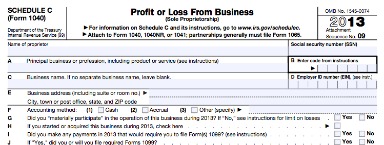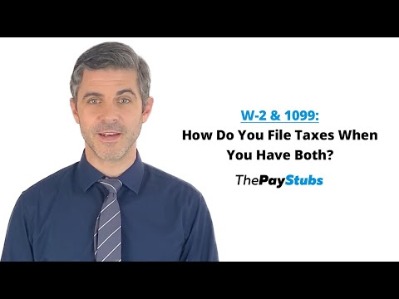
The promissory note, on the other hand, is issued by the debtor and is a promise to pay a particular amount of money in a given period. This financial instrument is a written agreement between two parties (the buyer and the seller) used widely in trade finance transactions and international trade. However, due to the risks involved with international transactions, the buyer or seller employs a bank to issue the bill of exchange. In regard to this, bills of exchange are sometimes referred to as bank drafts.
- The Bill of Exchange is the most widely used and also the most complicated of all the negotiable instruments.
- Share warrants, debenture warrants, and dividend warrants are a few examples of negotiable instruments.
- The primary distinction between a Bill of Exchange and a Promissory Note is that the former bears a command to pay money, whilst the latter bears a promise to pay money.
- A negotiable instrument is a commercial document in writing, that contain an order for payment of money either on demand or after a certain time.
A promissory note is a debt negotiable instrument written by a borrower (drawer) who promises to pay the lender (payee), a specific sum on-demand or on a particular future date which is predefined. Cheques, bills of exchange, and promissory notes are the 3 types of negotiable instruments. The table below, however, highlights the difference between promissory note, bill of exchange, and cheque. A promissory note is a specific form of a bill of exchange because it is a financial instrument that is a written promise by one party to pay another party. The essential difference is that a promissory note is a promise by the maker to pay whereas an ‘ordinary’ bill of exchange is an order to a party to pay. Hence, it is a type of bill of exchange and is accordingly governed by detailed provisions of BEA 1882.
Settlement Deed / Memo of Understanding in A Criminal Case
The buyers may also be referred to as the drawer/maker/payor and the drawee/makee/payee. How the parties are referred to depend on why the bill of exchange is used. As explained by the JPMNT, there are some instances where the drawer may be asked for a discount, or other issues may occur with early acceptance. Generally, property, plant and equipment pp&e bills of exchange and promissory notes specifically, are governed by the Bills of Exchange Act 1882 (BEA 1882). Although the characteristics of promissory notes and bills of exchange are similar, they differ. Bill of Exchange is an instrument that is used by a bank or merchant to pay money in a hazy or untraced way.

In a bill of exchange, the drawer is the maker who orders the drawee to pay the bill to a person called the payee or to his order. This article looks at meaning of and differences between two types of negotiable instruments – bill of exchange and promissory note. Learning the differences between the two main legal documents requiring the repayment of a debt by an individual is important. Whether you are involved in real estate or interested in approaching investors because of your business, understanding the differences between a bill of exchange and a promissory note is crucial.
Possess these Qualities to be a Successful Lawyer
Unlike a check, however, a bill of exchange is a written document outlining a debtor’s indebtedness to a creditor. It’s frequently used in international trade to pay for goods or services. While a bill of exchange is not a contract itself, the involved parties can use it to fulfill the terms of a contract.
July Webinar 2022 – The value and problems of using an IPU … – Lexology
July Webinar 2022 – The value and problems of using an IPU ….
Posted: Tue, 09 Aug 2022 07:00:00 GMT [source]
The maker of a promissory note stands in immediate relation with the payee, while the maker or drawer of an accepted bill of exchange stands in immediate relation with the acceptor and not the payee. The liability of the maker of a promissory note is primary and absolute, but the liability of the drawer of a bill of exchange is secondary and conditional. According to the traditional concept, cash is an inevitable part of every transaction. But in the present scenario, whether it is trading, banking, financing or any other economic activity, bill of exchange and promissory note make the transactions convenient even in the absence of immediate cash. He also leads Tahmidur Rahman Remura ‘s Corporate & Commercial Practice and became one of the youngest Partner in the history of this renowned international law firm in 2023 at the age of 25. His areas of expertise include mergers and acquisitions, FDI in Bangladesh, banking, insurance, joint ventures, corporate restructuring, private equity , tax, family, and fund formation.
What are the differences between a promissory note and bill of exchange?
Acceptance is a key feature that distinguishes the two business instruments, as a bill of exchange must be accepted before it can be used. When working with these two, one should be aware of their meanings and characteristics. Promissory notes are retained by the payee or seller and, once payment has been completed, must be canceled and returned to the issuer or buyer. In terms of legal enforceability, a promissory note is more formal than an IOU but less so than a standard bank loan. They may accrue interest if not paid by a certain date, however, in which case the rate must be specified on the instrument.
Sale To An IDIT For A Promissory Note – The Best Estate Planning … – Mondaq News Alerts
Sale To An IDIT For A Promissory Note – The Best Estate Planning ….
Posted: Fri, 13 Jan 2023 08:00:00 GMT [source]
However, they have recently become more commonly used, primarily in real estate transactions. A bill of exchange, which is a written note legally bonded and duly stamped and signed by its drawer, is also a negotiable tool. It directs that a certain sum of money be paid to the holder of this instrument on demand or within a specified time limit.
Draft of Criminal Complaint under Section 200 & 156( Criminal Procedure Code
The bill of exchange stipulates that Company ABC will pay Car Supply XYZ $25,000 in 90 days. Company ABC becomes the drawee and accepts the bill of exchange and the goods are shipped. In 90 days, Car Supply XYZ will present the bill of exchange to Company ABC for payment. The bill of exchange was an acknowledgment created by Car Supply XYZ, which was also the creditor in this case, to show the indebtedness of Company ABC, the debtor. The drawee is the party that pays the sum specified by the bill of exchange. The drawer and the payee are the same entity unless the drawer transfers the bill of exchange to a third-party payee.
They can, conversely, be transferred at a discount before the date specified for payment. A bill of exchange must clearly detail the amount of money, the date, and the parties involved including the drawer and drawee. Foreign bills of exchange must be protested for dishonour when such protest is required to be made by the law of the country where they are drawn; but no such protest is necessary in case of dishonour of a promissory note. A promissory note cannot be made payable to the maker himself, while in a bill of exchange the drawer and payee may be the same person. To make a promissory note, there must be an express undertaking or promise to pay the amount mentioned.
- It is, therefore, a paper instrument used to transfer money from one party to another rather than transferring the actual money itself.
- A bill of exchange must clearly detail the amount of money, the date, and the parties involved including the drawer and drawee.
- How the parties are referred to depend on why the bill of exchange is used.
- If the interest laws, also referred to as usury laws, are not followed, the promissory note or debt may be thrown out by the court.
- LegalZoom provides access to independent attorneys and self-service tools.
The
form of the drawing, endorsement, guaranty, intervention, acceptance or
protest of a bill of exchange shall be governed by the law of the place in
which each one of those acts is performed. Capacity to enter into an obligation by means of a bill of exchange shall be
governed by the law of the place where the obligation is contracted. The instrument can be freely transferred by delivery or endorsement, as well as by trade customs.
A bill of exchange issued by individuals is referred to as a trade draft. However, if the funds are to be paid at a set date in the future, it is known as a time draft which gives the importer a short amount of time to pay the exporter for the goods after receiving them. A check always involves a bank while a bill of exchange can involve anyone, including a bank. Checks are payable on demand while a bill of exchange can specify that payment is due on demand or at a specified future date. Bills of exchange generally do not pay interest, making them in essence post-dated checks.

Both the bill of exchange and promissory note are important documents related to debt and repayment, but they operate in distinctly different ways. In this article, you will learn about the difference between a bill of exchange and a promissory note, more information about each, and an example of a bill of exchange and a promissory note. In order to distinguish between a bill of exchange and a promissory note, we can compare these two instruments using some factors.
Parties involved
The first thing to know about a bill of exchange is that it is only used in international business transactions. It is governed by the United Nations Convention on International Bills of Exchange and International Promissory Notes. 5) If you need to take a loan from a bank then the bank will ask you to give a Letter of Undertaking but if you have a promissory note then no such procedure will be followed as a promissory note is more secure.
8) In the case of a bank, you can use a bill of exchange to raise funds as collateral whereas in the case of an individual, you cannot do that. 6) Bill of Exchange serves as a legal proof that payment will be made in case of default by the payer whereas no such proof is needed in case of Promissory Note. J.B. Maverick is an active trader, commodity futures broker, and stock market analyst 17+ years of experience, in addition to 10+ years of experience as a finance writer and book editor.
If a bill of exchange is issued by a bank, it can be referred to as a bank draft. If bills of exchange are issued by individuals, they can be referred to as trade drafts. If the funds are to be paid immediately or on-demand, the bill of exchange is known as a sight draft. In international trade, a sight draft allows an exporter to hold title to the exported goods until the importer takes delivery and immediately pays for them. However, if the funds are to be paid at a set date in the future, it is known as a time draft.
The procedures and
time-limits for acceptance, payment and protest shall be governed by the law
of the place where such acts are or should be performed. Using our easy-to-follow step-by-step templates, you can create documents and forms in just minutes. Mrs Q wants to start a garment business but does not have sufficient capital. Mr P is a well-established businessman and agrees to finance Mrs Q’s business idea. Mr P provides a loan of ₹ to Mrs Q at 10% interest to be paid in 50 equal monthly instalments of ₹3300 each. Mr. Williams wants to start an electronic business but doesn’t have enough capital.